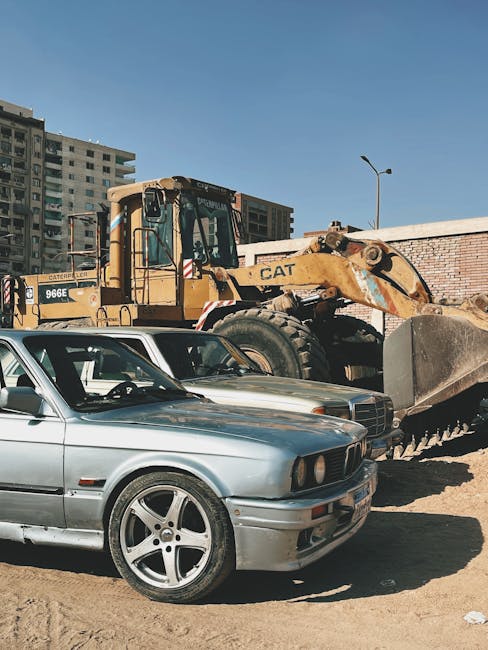How Cars Have Shaped Urban Development
The automobile is more than just a mode of transportation—it is a transformative force that has fundamentally reshaped the way cities are designed, built, and experienced. Since the mass production of cars began in the early 20th century, urban landscapes have evolved in response to the growing dominance of personal vehicles. From sprawling suburbs to multi-lane highways, from parking lots to drive-thru services, the influence of cars on urban development is undeniable. This article explores the profound ways in which automobiles have altered city planning, infrastructure, and daily life, while also considering the challenges and future directions of car-centric urbanism.
The Rise of the Automobile and the Birth of Suburbia
Before the widespread adoption of cars, cities were largely compact, with most residents living within walking distance of workplaces, markets, and public transit hubs. The introduction of affordable automobiles, particularly Henry Ford’s Model T in 1908, revolutionized mobility, allowing people to live farther from city centers while still commuting efficiently. This shift gave rise to suburbanization—a phenomenon that redefined urban growth patterns.
Suburbs, characterized by single-family homes, spacious yards, and lower population densities, became the ideal living environment for middle-class families seeking a retreat from crowded urban cores. Developers capitalized on this trend, constructing vast residential neighborhoods connected by newly paved roads. The federal government further encouraged suburban expansion through policies like the 1956 Interstate Highway Act, which funded an extensive network of highways, making car travel faster and more convenient.
As a result, cities expanded outward rather than upward, leading to urban sprawl—a low-density, car-dependent form of development that has become a defining feature of many modern metropolises.
The Transformation of Urban Infrastructure
The dominance of cars necessitated significant changes in urban infrastructure. Wide roads, highways, and bridges were built to accommodate increasing traffic volumes, often at the expense of pedestrian spaces and public transit systems. Streets, once shared by pedestrians, streetcars, and horse-drawn carriages, were redesigned primarily for automobiles, with sidewalks shrinking and crosswalks becoming secondary considerations.
Parking became a major urban challenge. Vast tracts of land were converted into parking lots and garages, particularly in downtown areas where space was already limited. In some cities, parking spaces occupy more land than parks or housing, illustrating the extent to which urban real estate has been devoted to cars.
Additionally, commercial and retail landscapes adapted to car culture. Drive-thru restaurants, shopping malls with massive parking lots, and big-box stores located on the outskirts of cities became standard features of the automotive age. These developments prioritized convenience for drivers but often discouraged walkability and public transit use.
Social and Environmental Consequences
While cars have provided unprecedented personal freedom and mobility, their dominance has also brought significant drawbacks. Urban sprawl has led to longer commutes, increased traffic congestion, and heightened air pollution. The reliance on fossil fuels has contributed to climate change, prompting cities to reconsider their car-centric models.
Moreover, car-dependent urban design has exacerbated social inequalities. Low-income communities, often located near highways or industrial zones, suffer disproportionately from pollution and lack access to well-maintained pedestrian infrastructure. Those without cars—whether due to cost, age, or disability—face mobility challenges in cities designed primarily for drivers.
The Future of Urban Development: Beyond the Car
As awareness of these issues grows, many cities are exploring alternatives to car-centric planning. Urbanists advocate for:
- Transit-Oriented Development (TOD): Designing neighborhoods around public transit hubs to reduce reliance on cars.
- Walkable and Bike-Friendly Cities: Expanding pedestrian zones, bike lanes, and greenways to encourage active transportation.
- Mixed-Use Zoning: Combining residential, commercial, and recreational spaces to minimize the need for long commutes.
- Smart Growth Policies: Promoting denser, more sustainable urban development to curb sprawl.
Emerging technologies, such as electric and autonomous vehicles, may also reshape urban mobility, potentially reducing emissions and traffic congestion. However, the ultimate goal is not just to replace gasoline cars with electric ones but to create cities where walking, cycling, and public transit are viable and preferred options.
Conclusion
Cars have undeniably shaped urban development, influencing everything from housing patterns to street design. While they have brought convenience and economic growth, their dominance has also led to environmental degradation, social inequities, and inefficient land use. As cities evolve, the challenge lies in balancing the benefits of automobile access with the need for sustainable, inclusive urban spaces. The future of urban development may not be car-free, but it must certainly be less car-dependent—prioritizing people over vehicles in the design of our cities.

